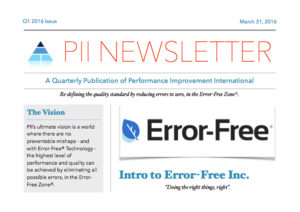PII’s research has found that workers’ safety performance can be significantly improved when they understand what, when, and where they can be induced to make errors. The inducers that are commonly encountered at workplaces, also called human error traps, have been exhaustively studied by PII over the past twenty years. PII’s research results in two critical conclusions:
- The typical worker can remember no more than 5-7 human error traps.
- For each type of work, there are no more than 7 human error traps that induced more than 90% of their errors.
Moreover, based on a detailed review of more than 7,000 injuries and operational events, an exhaustive list of human error traps contributing to 99% of the reviewed events was developed. These human error traps are listed as follows (not in order of their importance):
- Drowsiness
- Distractions
- Over-confidence
- Time pressure
- Vague and imprecise guidance
- Inexperience
- Complacency
- Hazard unawareness
- Adverse environments
- Non-compliance inducers
- Miscommunication inducers
- Mistake inducers
To achieve maximum effectiveness in the elimination of human error traps, PII only selects seven out of the twelve human error traps for a typical organization. These seven human traps are organization-specific. For example, an engineering organization would have a very different set of human error traps from a maintenance department.
Moreover, PII found that human error traps instruction is effective in avoiding unwanted errors. PII’s human error training focuses on the following purposes:
- Workers are made aware of human error traps and how to avoid them.
- Supervisors are made aware of how to eliminate human error traps before the performance of jobs.
- Managers know how to set up policies that are free of human error traps.






